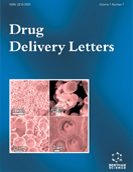Abstract
Background: Nanoformulation strategies that render spatial placement and temporal delivery of drugs feasible, can be of utility in delivering the drug specifically to afflicted liver cells for greater therapeutic benefit. Receptor-based targeting is an excellent approach if the receptor is found exclusively on the cells to which drug needs to be delivered. Asialoglycoprotein receptors (ASGPR), mannose receptor, transferrin, glycyrrhetinic acid are some of the receptors selectively present on certain cell types within a liver.
Objective: This review gives a glimpse of comparison of active vs. passive liver targeting and summarizes the plethora of ligands and delivery systems reported in the literature for targeting the receptors. Design of a targeted delivery system requires a comprehensive understanding of the interaction of targeting ligand with the receptors as well as its behaviour within the system.
Discussion: The review highlights techniques like fluorescence correlation spectroscopy, confocal microscopy, flow cytometry and surface plasmon resonance as some in vitro tools that can aid in investigating the behaviour of targeted formulations with biological systems. The fate of delivery system via various endocytic mechanisms depending on the cell type has been outlined.
Conclusion: Finally, the review deals with clinical relevance of liver-targeted nanoformulations addressing the aspect of safety and toxicity in developing targeted nanoarchitectonics.
Keywords: Hepatic targeting, ASGPR, glycyrrhetinic acid receptors, liposomes, receptor kinetics, surface plasmon resonance, nanoparticle toxicity, clathrin-mediated endocytosis.
Graphical Abstract





























